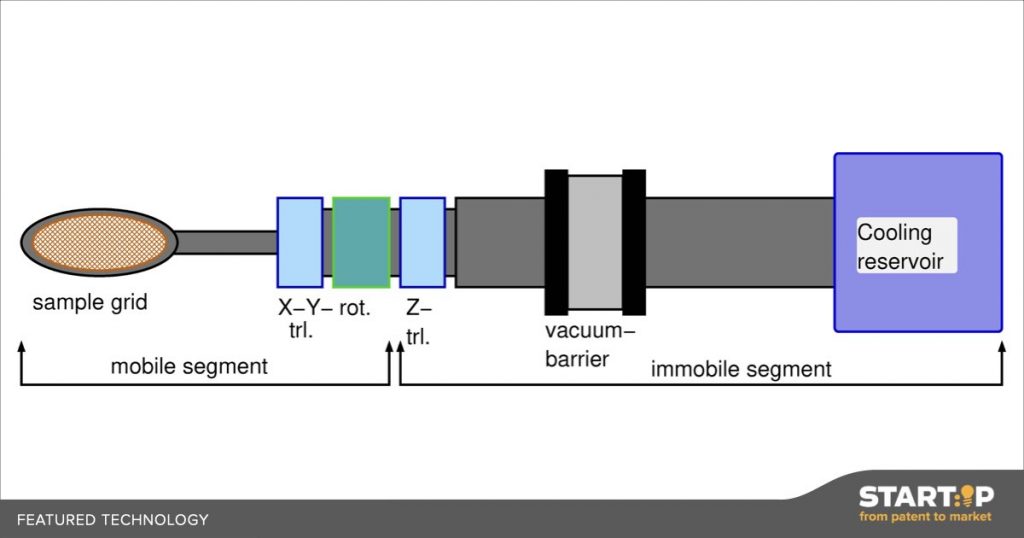Crystallography is a chemistry technique for characterizing compounds. Standard crystallography uses X-ray technology, but this is limited because crystals must be a certain size. Only about a third of crystalline compounds make large crystals. Alternatively, transmission electron microscopes can be used for the same technique. Here, there is no lower size limitation, but these machines are designed for imaging, not crystallography. This technology is a sample holder for these microscopes but specialized for crystallography, with the aim of removing one of the current bottlenecks of this technique.
START:IP
Technologie Kurzbeschreibung (nur Englisch)
Specialized electron crystallography sample holder
Specialized sample holder for single crystal electron diffraction
Bookmark0
Proper characterization of new chemical compounds is essential for understanding how they function, which is of particular importance in pharmacology (e.g. new medical drugs) or industry (e.g. catalysts, batteries). Electron crystallography is a relatively new approach in crystallography, whereby electron beams, instead of X-rays, are directed at crystals containing the compound. In X-ray crystallography, the crystals containing the compound must be large in order to withstand damage from the x-ray beam. Electron crystallography has the advantage that electrons interact more strongly with the sample, and so more data can be collected with less exposure, meaning that the crystals do not need to be as large. Many compounds cannot actually be fully characterized because they cannot form the large crystals required for X-ray crystallography. Electron crystallography therefore opens up the potential to analyze many more compounds. However, transmission electron microscopes, as their name suggests, are specialized machines for microscopy. While they can be used for crystallography, finer control over the sample is required. Specifically, the crystals need to be rotated in order to collect data from all angles, and this needs to be done continuously and at a stable speed. Current sample holders do rotate but are limited to +/- 70 degrees of rotation and are difficult to have fine control over, largely because the motor rotates the entire holder. This new sample holder puts the motor inside of the instrument, so that only the sample is rotated. Put simply, because there is now less of the holder to rotate, it can be done more precisely. A second critical advantage of this sample holder is that it enables the user to very quickly align the sample compared to current sample holders. This is essential to start collecting data as soon as possible to limit damage that accrues over time to the crystals by the electron beam (this is less than that of X-ray beams but does still occur). In summary, electron crystallography has a lot of potential for chemical analysis but is currently under-utilized due to the limitations with transmission electron microscopes. This technology is a specialized tool to enhance the capacity of these microscopes to be used for crystallography.
If you click the button and fill out the form to be „matched“ with a technology, we will introduce you to the scientist / transfer manager of the respective research institution. In this way, you immediately have the chance to receive more detailed information and to start discussions about a possible joint project.

Mit dem Laden des Videos akzeptieren Sie die Datenschutzerklärung von YouTube.
Mehr erfahren

